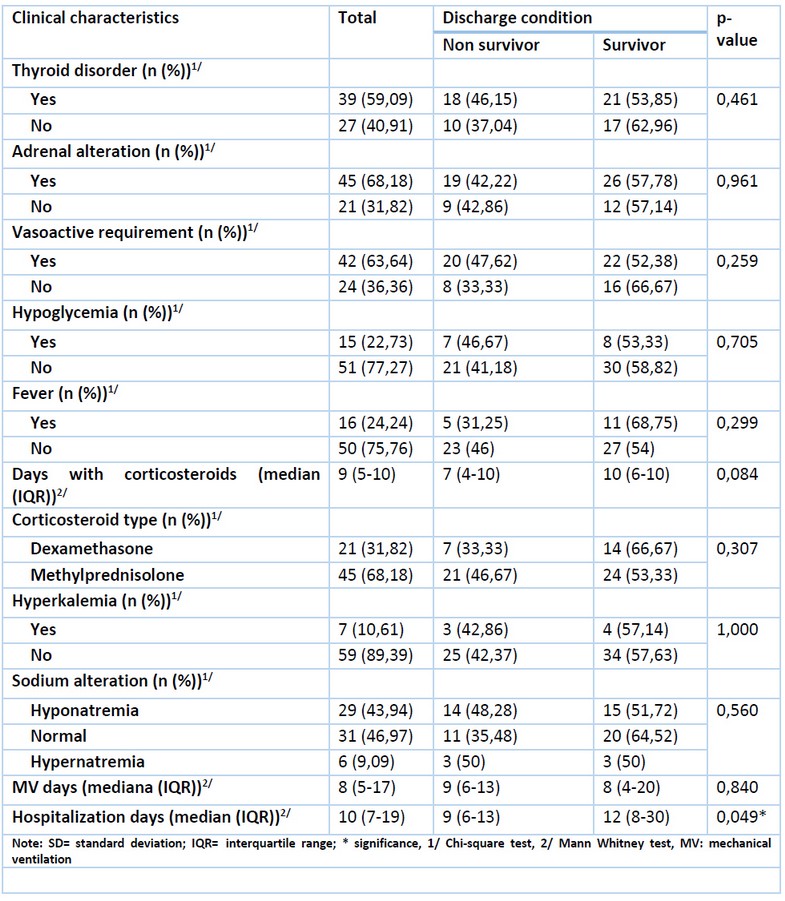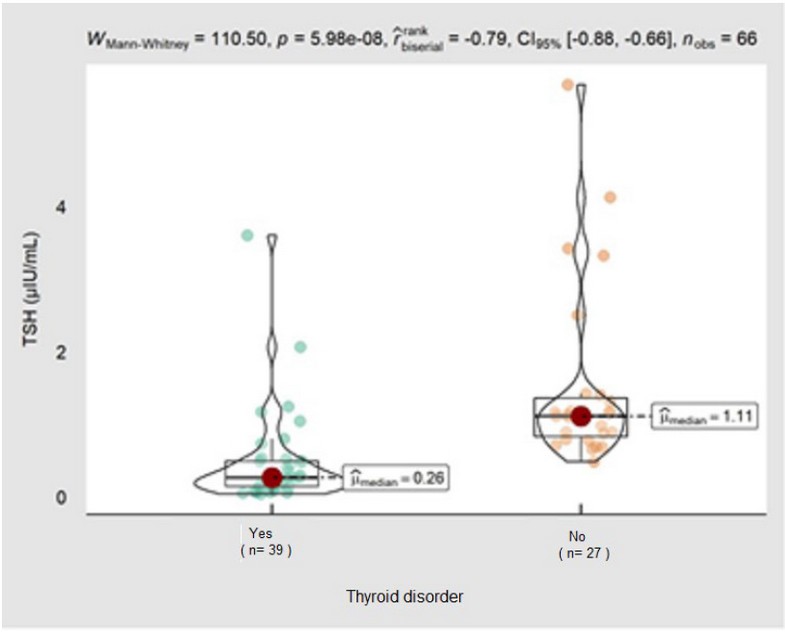2022.07.02.7
Files > Volume 7 > Vol 7 No 2 2022
EndoCovid: Thyroid and adrenal hormonal alterations in a cohort of critically ill patients with COVID-19. A preliminary analysis
Jorge Luis Vélez-Páez1,2, Luis Cornejo-Loor1, Fernando Jara-González1
1. Pablo Arturo Suárez Hospital, Critical Care Unit, Clinic Investigation Center. Quito – Ecuador.
2. Central University of Ecuador, Faculty of Medical Science, Medicine School. Quito – Ecuador.
Available from: http://dx.doi.org/10.21931/RB/2022.07.02.7
Coronavirus
disease 2019 (COVID-19) infection was primarily described as atypical pneumonia
with severe respiratory disorders1, although the reported evidence
revealed a condition of multisystemic impact over time. It maintains a variable
respiratory severity that significantly affects other organs and systems, such
as the vascular endothelium, the central nervous system, the heart, and many
endocrine glands such as the thyroid, the adrenals, and the pancreas2.
The impact of SARS-Cov-2 on the endocrine system is so frequent that
specialists have coined the term "EndoCovid" to refer to the
endocrinological disorders that occur during this disease and require special
attention in post-COVID19 patients. 3. The universal distribution of
the angiotensin 2 receptor (ACE-2), which is the proven gateway for the virus
to enter our cells, makes the viral presence in glandular tissue possible and
causes damage by three fundamental mechanisms: direct damage immunological
mechanism and functional alteration4,5. Specifically, it has already
been demonstrated with SARS-Cov-1 and currently with SARS-Cov-2, damage at the
pituitary level6, with hypophysitis reported in autopsies7.
This alteration leads to secondary hypopituitarism that must be considered for
its diagnosis and treatment, emphasizing cortisol deficiency, which often
debuts hyponatremia, a condition associated with a poor prognosis6.
The virus can also cause direct damage to the thyroid (COVID-19-associated
thyroiditis and post-COVID-19 or post-vaccination autoimmune thyroid pathology)
and the adrenal glands, which is associated with severe forms of the disease
although the impact of this disorder in outcomes such as mortality is not clear8.
Several of the critically ill patients that we attended with a diagnosis of
severe COVID-19 infection, who had overcome the hypoxemia, were noticed to
worsen and died after day 10 of hospitalization. A non-pharmacological
distributive shock with negative bacterial cultures was determined as their
cause of death. Under this premise, we requested the adrenal and thyroid
hormones dosage, observing a significant hormonal deficit. The subsequent compensation
of the endocrine disorder meant a significant clinical improvement and even
survival of patients whose clinical characteristics and severity scales pointed
to a high probability of death. We present a series of 66 patients with severe
COVID-19 infection, where 28 (42.4%) died, and 38 (57.6%) survived; the patient's
average age was 47.74 years, with differences being observed when comparing by
discharge condition (p-value 0.024, 51.79 years in non-survivors vs. 44.76
years in survivors); male predominance was observed 81.82%. (Table 1)

Table 1. Demographic characteristics by discharge condition.
Thyroid and adrenal alterations were observed in 59.09% and 68.18% of the patients. In addition, when comparing mortality between the presence or absence of thyroid and adrenal alterations, no significant differences were observed, which can be explained by the indicated hormonal replacement (adrenal and thyroid replacement were 63.64% and 62.12%, respectively). This would also explain the absence of difference in electrolyte disturbances, fever, eosinophil count and shock. Methylprednisolone was the primary corticosteroid used in adrenal hormone replacement (68.18%), and levothyroxine in thyroid replacement. The median number of days of mechanical ventilation was 8, while hospitalization stays was10 days. The hospital stay presented significant differences by discharge condition (p-value 0.049, 9 days in non-survivors vs. 12 days in survivors). (Table 2)
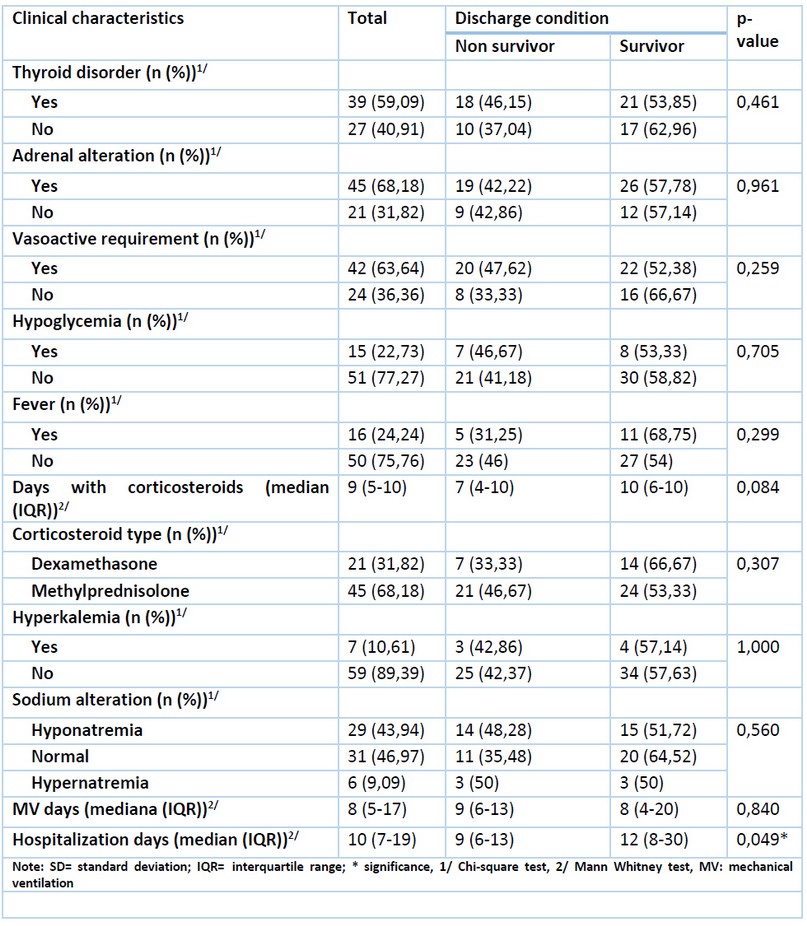
Tabla 2. Clinical characteristics by discharge condition
When comparing the median cortisol levels of COVID-19 patients at admission and 6 days later, significant differences were observed (p-value <0.001, 2.24 mcg/dL at admission vs 17.88 mcg/dL.at day 6). The data indicate that hormone replacement was effective in normalizing the adrenal profile. (Figure 1).
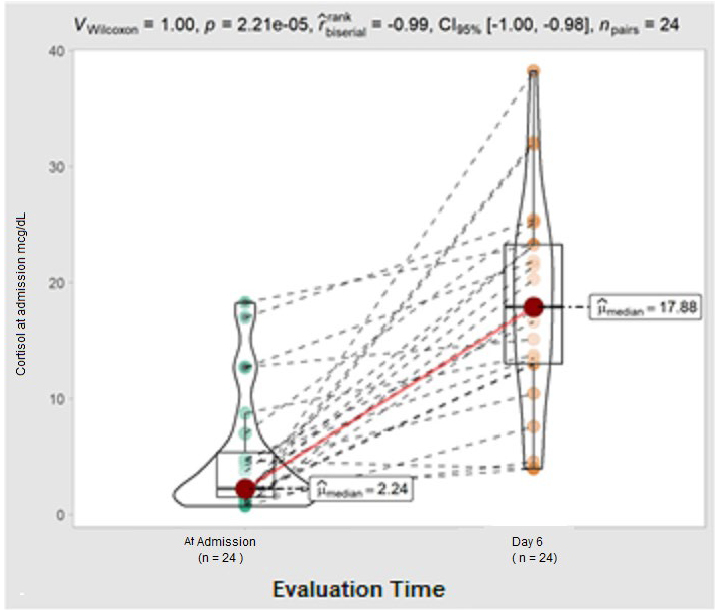
Figure 1. Comparison of cortisol at admission and six days later
When comparing the TSH values between patients with and without thyroid alteration, significant differences were observed (p-value <0.001, 0.26 μlU/mL for those with alteration vs. 1.11 μlU/mL for those without alteration) (Figure 2), but no significant differences were observed for T4 levels (Figure 3), which indicates that thyroid involvement is predominantly central in this series. Median cortisol values showed significant differences in the presence or absence of adrenal alteration (p-value <0.001, 2 mcg/dL in the presence of alteration vs. 17 mcg/dL in the absence). (Figure 4)
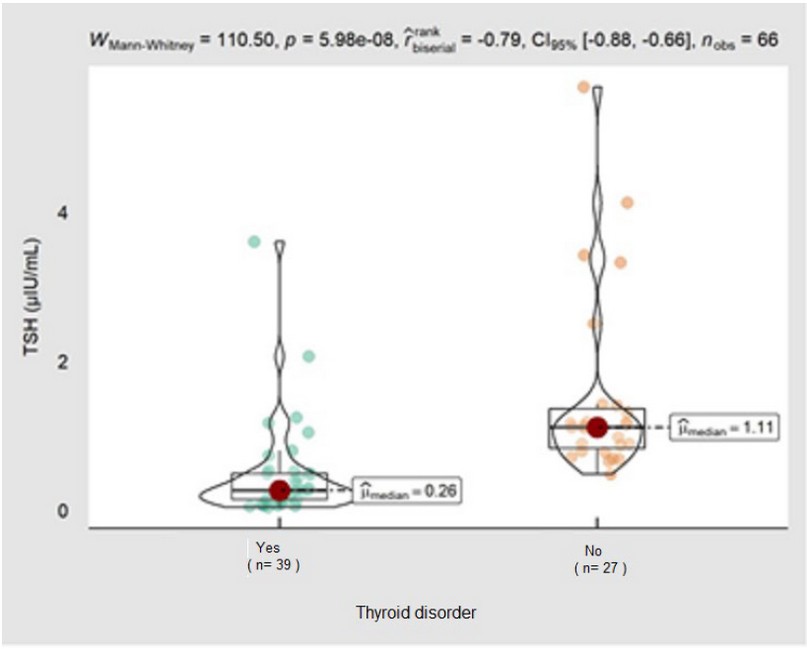
Figure 2. Comparison of TSH by presence or absence of thyroid alteration.
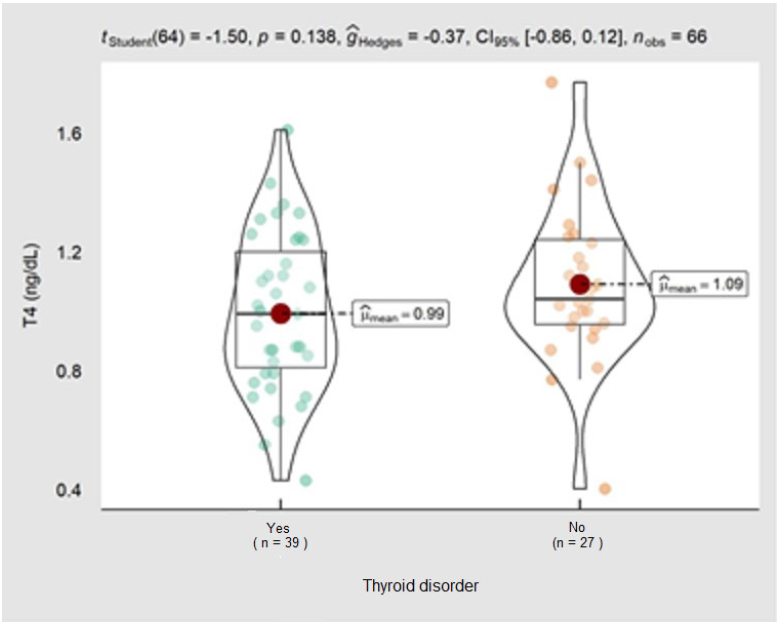
Figure 3. Comparison of T4 values in the presence or absence of thyroid alteration
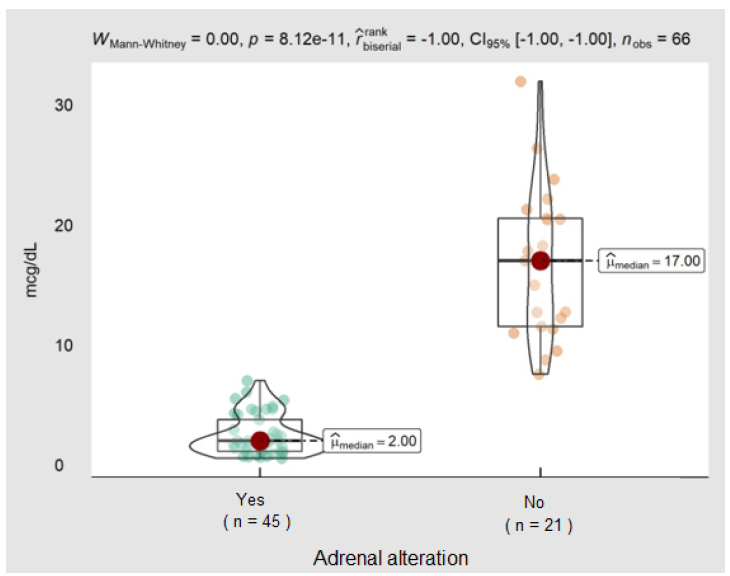
Figure 4. Comparison of cortisol values in the presence or absence of adrenal alteration
CONCLUSIONS
- Based on the above, we can infer that endocrinological alterations associated with COVID-19 infection are frequent and probably more prevalent in patients who progress to severe forms and develop distributive shock with unknown infectious or pharmacological causes.
- The use of corticosteroids in patients with severe symptoms would be helpful for the management of the hyperinflammatory condition and control the adrenal insufficiency in these patients; however, further evidence is needed.
- The data regarding thyroid hormone alterations are consistent with evidence reported worldwide, where the alteration of TSH is a distinctive characteristic of subacute thyroiditis due to COVID-19 infection.
We are waiting for the new publications to be written on this exciting topic.
REFERENCES.
1. Gattinoni, L., Gattarello, S., Steinberg, I., Busana, M., Palermo, P., Lazzari, S., Romitti, F., Quintel, M., Meissner, K., Marini, J. J., Chiumello, D., & Camporota, L. (2021). COVID-19 pneumonia: pathophysiology and management. European Respiratory Review: An Official Journal of the European Respiratory Society, 30(162), 210138.
2. Das, L., Dutta, P., Walia, R., Mukherjee, S., Suri, V., Puri, G. D., Mahajan, V., Malhotra, P., Chaudhary, S., Gupta, R., Jayant, S. S., Agrawal, K., Kumar, V., Sachdeva, N., Rastogi, A., Bhadada, S. K., Ram, S., & Bhansali, A. (2021). Spectrum of endocrine dysfunction and association with disease severity in patients with COVID-19: Insights from a cross-sectional, observational study. Frontiers in Endocrinology, 12, 645787.
3. El impacto de la afectación metabólica del SARS-CoV-2 lleva a los especialistas a contemplar la existencia de una endo-COVID-19 - Medscape - 5 de nov de 2021.
4. Garg, M. K., Gopalakrishnan, M., Yadav, P., & Misra, S. (2020). Endocrine involvement in COVID-19: Mechanisms, clinical features, and implications for care. Indian Journal of Endocrinology and Metabolism, 24(5), 381–386.
5. Lisco, G., De Tullio, A., Stragapede, A., Solimando, A. G., Albanese, F., Capobianco, M., Giagulli, V. A., Guastamacchia, E., De Pergola, G., Vacca, A., Racanelli, V., & Triggiani, V. (2021). COVID-19 and the endocrine system: A comprehensive review on the theme. Journal of Clinical Medicine, 10(13), 2920.
6. Vakhshoori, M., Heidarpour, M., Bondariyan, N., Sadeghpour, N., & Mousavi, Z. (2021). Adrenal insufficiency in Coronavirus disease 2019 (COVID-19)-infected patients without preexisting adrenal diseases: A systematic literature review. International Journal of Endocrinology, 2021, 2271514.
7. Freire Santana, M., Borba, M. G. S., Baía-da-Silva, D. C., Val, F., Alexandre, M. A. A., Brito-Sousa, J. D., Melo, G. C., Queiroga, M. V. O., Leão Farias, M. E., Camilo, C. C., Naveca, F. G., Xavier, M. S., Monteiro, W. M., Augusto Pivoto João, G., Hajjar, L. A., Ordi, J., Lacerda, M. V. G., & Ferreira, L. C. L. (2020). Case report: Adrenal pathology findings in severe COVID-19: An autopsy study. The American Journal of Tropical Medicine and Hygiene, 103(4), 1604–1607.
8. Jeeyavudeen, M. S., Patrick, A. W., Gibb, F. W., & Dover, A. R. (2021). COVID-19 vaccine-associated subacute thyroiditis: an unusual suspect for de Quervain's thyroiditis. BMJ Case Reports, 14(11), e246425.
Received: 12 January 2022 / Accepted: 24 February 2022 / Published: date. 15 May 2022
Citation: Vélez-Páez J , Cornejo-Loor L, Jara-González F. EndoCovid: Thyroid and adrenal hormonal alterations in a cohort of critically ill patients with COVID-19. A preliminary analysis.Revis Bionatura 2022;7(2). 6. http://dx.doi.org/10.21931/RB/2022.07.02.7


